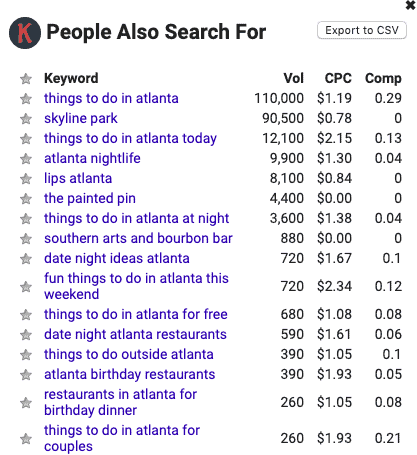What’s one way to help prospective travelers find your tour, activity, attraction or experience faster, appear higher in Google’s search algorithm and increase your direct bookings? By paying attention to an acronym you’ve likely heard before: SEO.
Search engine optimization is often the first thing operators think of when they want to increase their direct bookings, as appearing higher in search—or on the first page of search queries—makes businesses seem more legitimate to future clients, and can lead to increased ticket sales.
However, understanding and improving SEO can be a complex, constantly evolving topic (there’s a whole industry dedicated to SEO alone). But a few relatively simple tweaks to your SEO strategy can lead to big payoffs.
Arival engaged the help of Lesli Peterson, owner of Sunstone Digital Marketing, for easy ways to improve your SEO for real results. Heed her tips below.
Blog Consistency Counts For SEO
“Lots of operators I work with get the idea to write a blog, and they’ll write five posts in one month and then forget it for a year,” says Peterson. “This is ineffective for SEO, as Google is always looking for fresh content,” she says. Skipping posts for a long time communicates to the search engine that your business isn’t as relevant as others who post regularly.
Maintaining a consistent blog schedule also tells Google that you are an authority on a specific topic, and will help get your website pushed to the front of search. “For instance, if you run a food tour in Cincinnati, you want Google to think you know everything about the Cincinnati food scene. Consistent blogs will help with this,” says Peterson.
Don’t try to write a blog post every day—as a business owner, this schedule is unrealistic. Try instead to publish a blog twice per month. Be sure to place this posting schedule in your calendar so you don’t forget.
Write Longer Posts
While articles that are short, pithy and straightforward are often the most viral content on the web, such as Buzzfeed’s popular listicles, research shows longer blogs and articles around 1,000-2,000 words are most SEO-friendly. Not only do longer posts provide more context about a certain topic for Google to pull from, but also it tells search your website is an authority on a specific topic.
Additionally, a longer article will encourage users to stay on your page for longer—another important metric Google factors into its search algorithm. Peterson says you can encourage readers to stay on your website for longer by embedding other mediums such as videos into your post. “I always tell clients to put videos into your posts when applicable. Use the embed code from Youtube or Vimeo,” she says, adding that “chunking” your text into different sections (such as this article) will help improve the readability of lengthy content.
Pay Attention to Keyword Search
Understanding what your customers are searching for on Google should guide your blog’s topics. “The specific keywords that people are looking for should match the keywords in your blog,” says Peterson. There are a variety of ways to learn most popular searches pertaining to your business, the most effective being investment in specialized keyword tools.
While Peterson uses a sophisticated, professional tool that costs $2,000 per month, she recommends using a Chrome Extension called Keywords Everywhere, which costs as little as a few bucks per month. With Keywords Everywhere, you can see exactly how many people are searching for specific keywords.

“It’s important for people to pick the right word—SEO tools will tell you exactly how many people are searching for which term,” says Peterson, who adds using keywords about the city in which you operate (such as “ghost tours in Atlanta” versus “best ghost tour in the world” will be more effective in ticket sale conversion).
Cater Your Copywriting
Based off of principles from a 2004 book called Breakthrough Advertising by Eugene Schwartz, it’s vital to understand how your potential customers already regard tours, activities and attractions, explains Peterson. When writing and distributing content, “talk to your customers differently depending on if they are aware of your business/tours versus people who never take tours,” she says.
For example, “Most Aware” people are those who already know about your company. If you send them articles about going into the backstory about your business, you’ll lose their attention. Conversely, if most of your customers have never taken a tour before—a group that Schwartz refers to as “Unaware” customers—you may want to write a post about why taking tours is a good way to explore a new destination.
Repurpose Old Stories
Writing blog posts is an important SEO tactic. But it can be time-consuming. Get more bang out of your buck by writing evergreen pieces—articles with topics that are current and applicable regardless of when it was published.
For example, a post you wrote in 2015 about autumnal things to do in your city doesn’t have to be rewritten every year. Rather, update your old article by checking to make sure old links work, and by ensuring the information you included is still correct. Then, change the publish date. “Google will recognize this blog as new content,” says Peterson. “You’ll be tricking the search engine—but in a good way.”

















